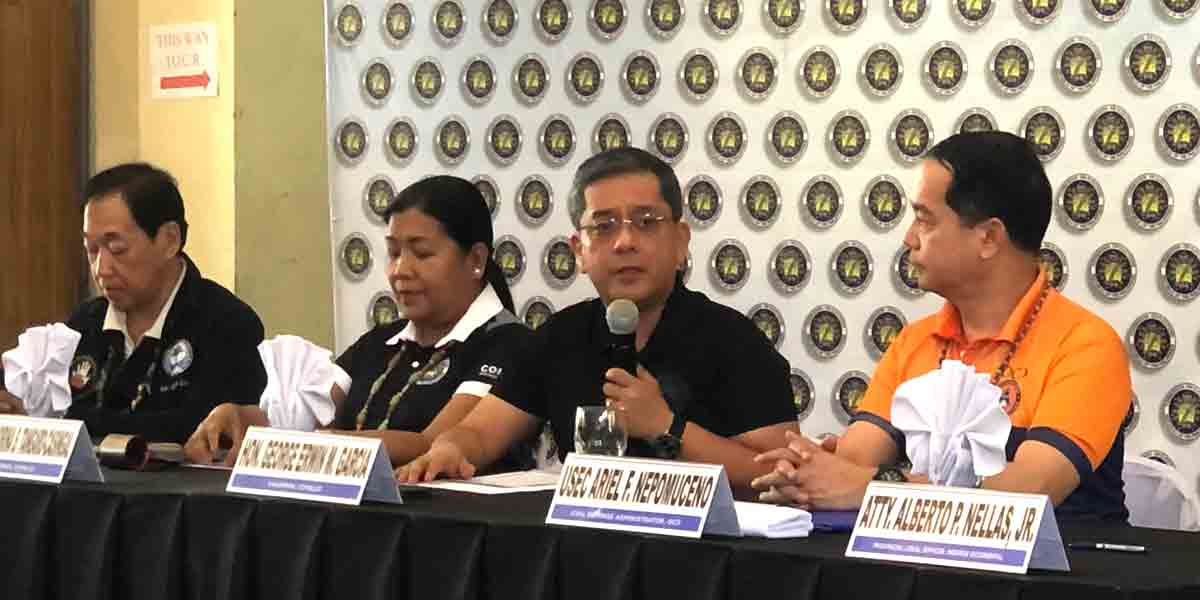
By Joseph Bernard A. Marzan
Metro Pacific Iloilo Water (MPIW), the primary water supplier for the majority of the Metro Iloilo area, assured the Sangguniang Panglungsod of Iloilo City on Monday that their water supply is stable, despite the increasing temperatures and the looming threat of El Niño.
During a Committee on Energy and Public Utilities hearing, MPIW discussed the current water situation and its forthcoming plans in the city.
The company has serviced the area under the Metro Iloilo Water District (MIWD) since 2019 and maintains that the average daily supply of 73.11 million liters per day (MLD), as of February 20, is still well above the critical level of 65 MLD.
In Iloilo City alone, they supply between 25 to 30 MLD.
The water is sourced primarily from Metro Iloilo Bulk Water (52.4 MLD) and Flowater Resources (20.65 MLD), which MPIW distributes to approximately 48,000 households spanning much of Iloilo City and the adjacent towns Pavia, Leganes, Oton, San Miguel, Sta. Barbara, Cabatuan, and Maasin.
Several portions of Jaro district are being supplied by another entity, South Balibago Waterworks (SBW).
The MPIW also reported that water at the Tigum River in Maasin, the source of most of the water that they distribute, was still at normal level.
In response to potential impacts of El Niño on the Tigum River, their main source, MPIW is actively supporting their bulk water suppliers in implementing action plans to mitigate any intensification of the phenomenon.
Their actions include assisting the bulk water suppliers in declogging the raw water line, recovering non-revenue water through pipe replacements, decreasing response times to reported leaks in the distribution systems, and system adjustments to manage reduced supply.
MPIW is also implementing the Sahara Project, a partnership with Maynilad Water Services, to detect and address leaks in their pipe network using GPS-equipped probes.
While water availability remains constant, MPIW acknowledged that full-service improvements are slated for completion by 2028. Non-revenue water reduction projects are still expected to be finished by next year.
In the city, these include pipe-laying projects in Mandurriao and Jaro districts, which are expected to be finished by the 3rd and 4th quarter of 2024, respectively.
Future increases in supply are also expected through a desalination plant in La Paz district which will supply 25 MLD, as well as allocation from the Jalaur Dam in Calinog town.
Plans for enhancing water supply include constructing a desalination plant in La Paz and drawing allocations from the Jalaur Dam, which are expected to provide significant increases in supply.
On the hearing’s sidelines, MPIW operations head Jedd Roxas admitted to the media that water does decrease as it approaches the city, due to physical limitations.
Roxas explained that supply diminishment towards the city is due to distribution pressures, akin to a congested highway. This has led to water supply rotation in certain city areas to maintain adequate pressure.
“The analogy is like that of a highway. When the highway is overused, there is no longer speed. The speed in terms of water supply is the pressure we are receiving. That is our only limitation [in Iloilo City]. That is why we are implementing water supply rotation in some portions of the city, to deliver the pressure,” he said.
For the time being, MPIW relies on updates from their bulk water suppliers and remains in close contact with the City Disaster Risk Reduction and Management Office (CDRRMO), monitoring any changes in water sources due to El Niño.
“Since there is still no indication from our raw water sources that there is already an effect of El Niño, we’re banking on that for the foreseeable future. There is still no effect in terms of the water supply,” he said.
“We’re coordinating with our bulk water suppliers as well as the [City Disaster Risk Reduction and Management Office] on a daily basis, continuously, so that if there are any changes in our raw water sources, we can alert the CDRRMO right away.”
Councilor Romel Duron, chairperson of the committee, appreciated MPIW’s transparency and commitment to resolving issues.
“For me, I can say that they were able to answer 95 percent of the questions and they were also honest enough to admit it, but they were a bit lacking in their drive to do it. I asked for their target, and they said next year, first quarter of 2025, that they would practically solve [underlying issues],” Duron told media.
Duron reiterated Iloilo City Mayor Jerry Treñas’ pronouncements concerning a possible State of Calamity declaration, saying that the council will rely on the data by the City Disaster Risk Reduction and Management Office (CDRRMO).















